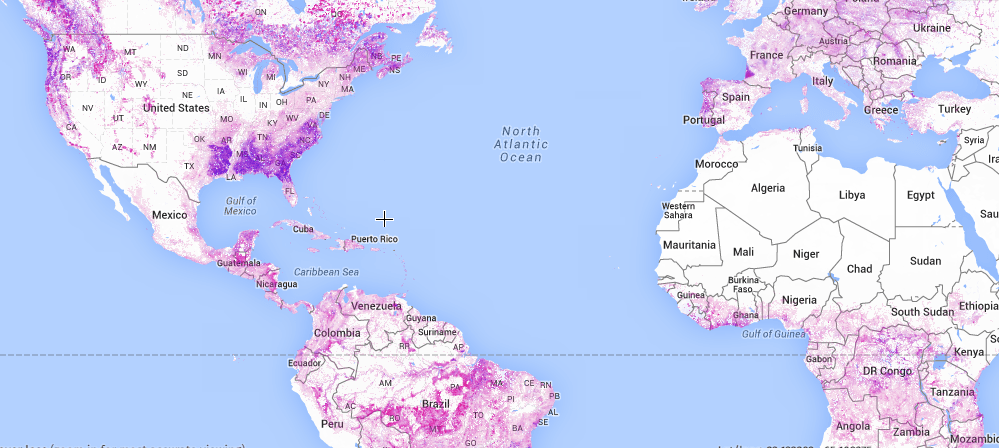You might not be able to snoop on your exes in Google maps like you’d like to, but one badass organization has figured out how to use satellite imaging technology to fight deforestation — and it’s actually working.
Just over a year ago, we wrote about a little interactive map showing the world’s trees disappearing in real-time. The map is powered by Global Forest Watch, which was launched by the World Resources Institute (WRI). The power-duo gathered a team of global NGOs, massive corporations, and international governments to help them — for instance, the Center for Global Development, the Norwegian, U.S., and U.K. governments, and the U.N. Environment Program. Oh, yeah, and Google.
Now, the site’s Google-powered satellite images show how global forests have changed in the past 15 years. New trees show up in blue, hacked ones in pink, and the combination covers the map in a cloudy purple haze. (We recommend viewing the map with its matching soundtrack).
[protected-iframe id=”5e836507a4212f8ef682762e612696aa-5104299-70834845″ info=”http://www.globalforestwatch.org/embed/map/3/15.00/27.00/ALL/grayscale/loss,forestgain?begin=2001-01-01&end=2013-12-31&threshold=30″ width=”640″ height=”600″ frameborder=”0″]
If you minimize the blue, you can see how disproportionately more trees are lost than gained — and, while you’re sobbing into your shirt sleeve, you can click between tabs to view worldwide forest cover, biodiversity hotspots, conservation efforts, and where there are resource and land rights.
Since its launch, Global Forest Watch has helped spread the bad news about deforestation — which has led big-time companies like Unilever, Cargill, and Asia Pulp to make commitments to stop deforestation. (We’ll believe it when we see it. We are literally watching you.) Some forest advocates have even started calling Global Forest Watch a policing technology. Here’s the Guardian:
The forestry website Mongabay recently reported that United Cacao, a London-listed company that promises to produce ethical, sustainable chocolate, had “quietly cut down more than 2,000 hectares of primary, closed-canopy rainforest” in the Peruvian Amazon. The company claimed that the land had been previously cleared, but satellite images showed otherwise.
The satellite images came from an online platform called Global Forest Watch …
Boom. Satellite imaging technology catching tree-slashing bandits is probably the coolest, most sane use of the internet yet. And since the map is public domain, now we can all channel that urge to spy on past significant others into more socially responsible surveillance.

